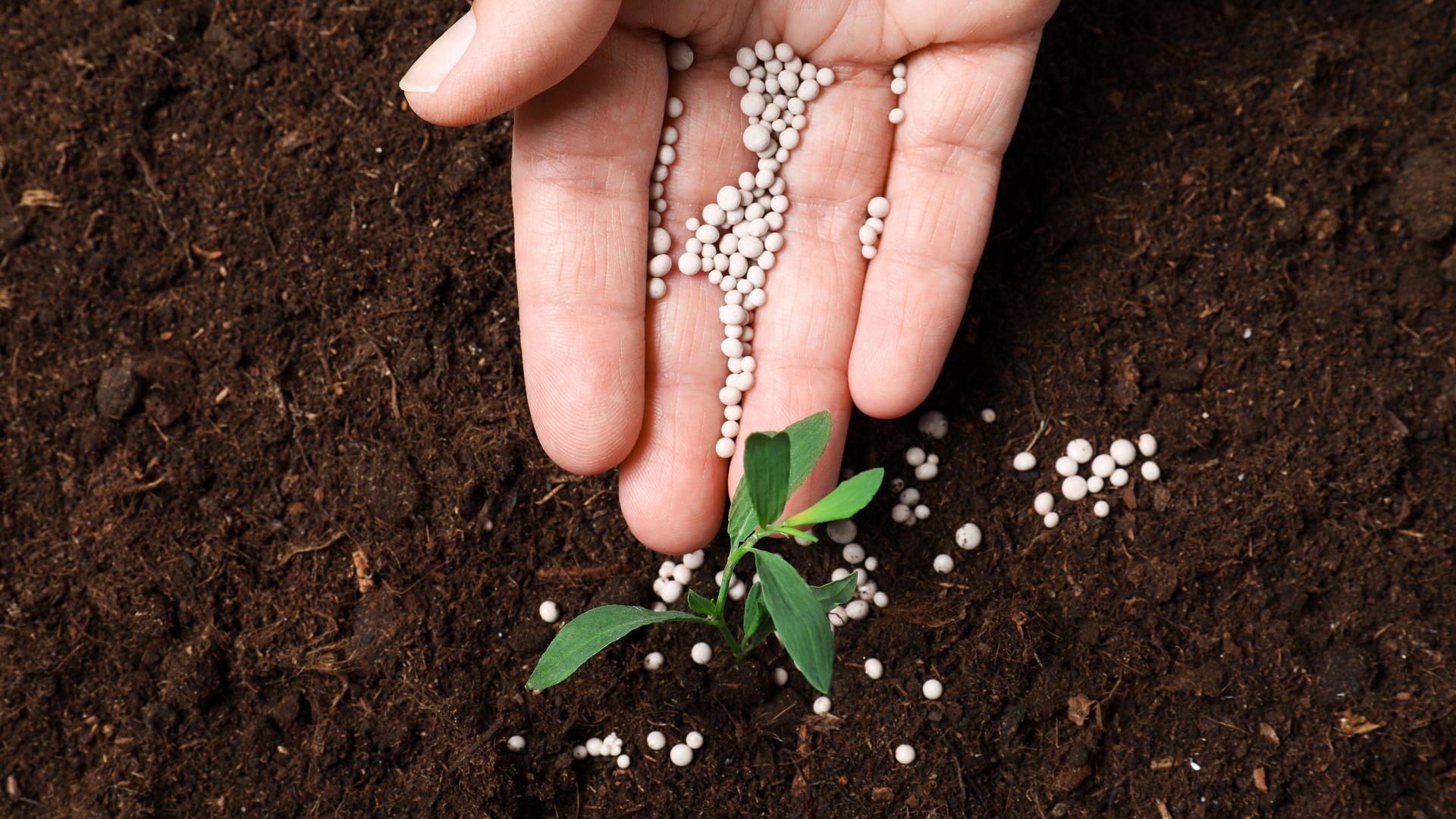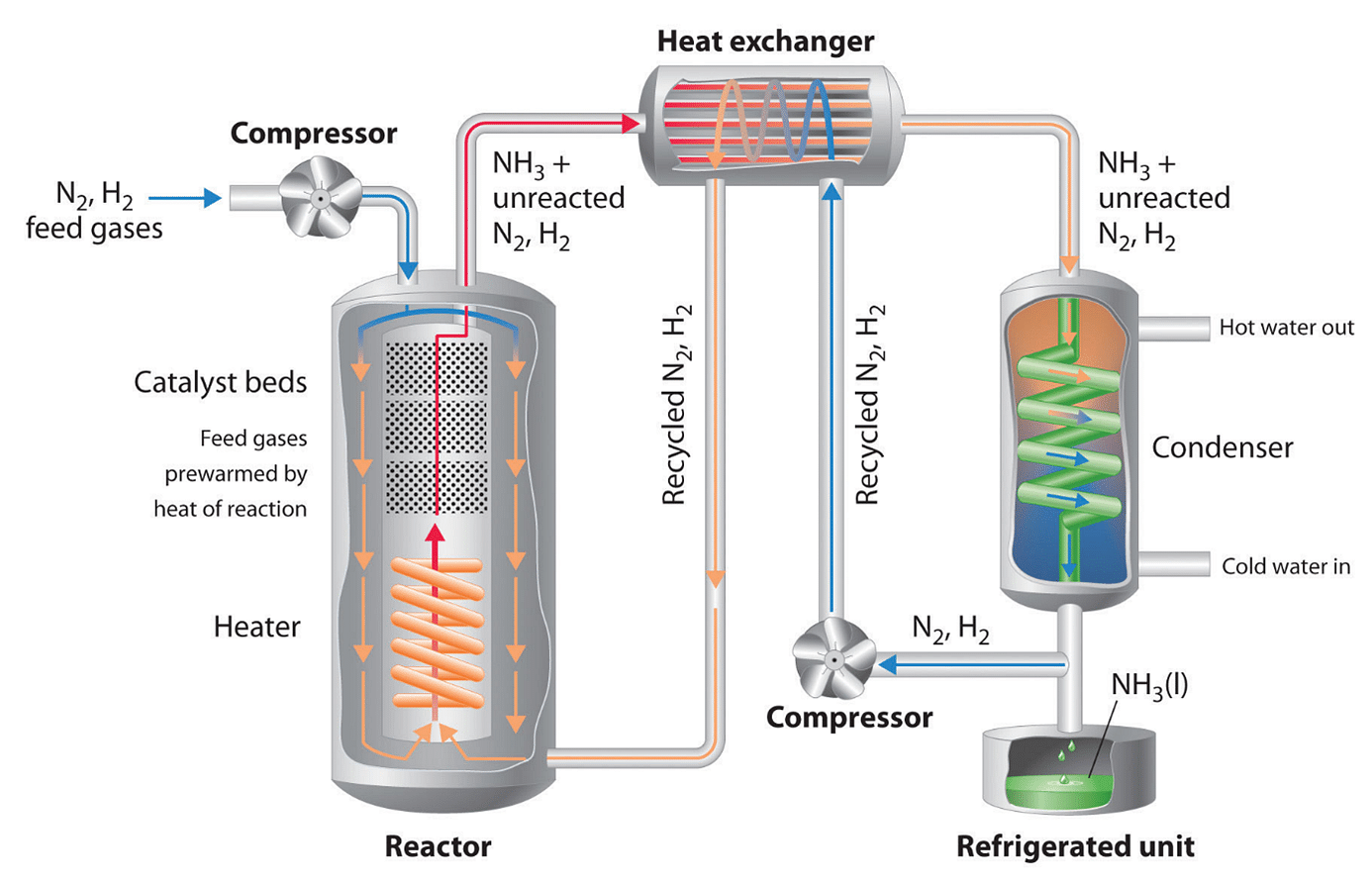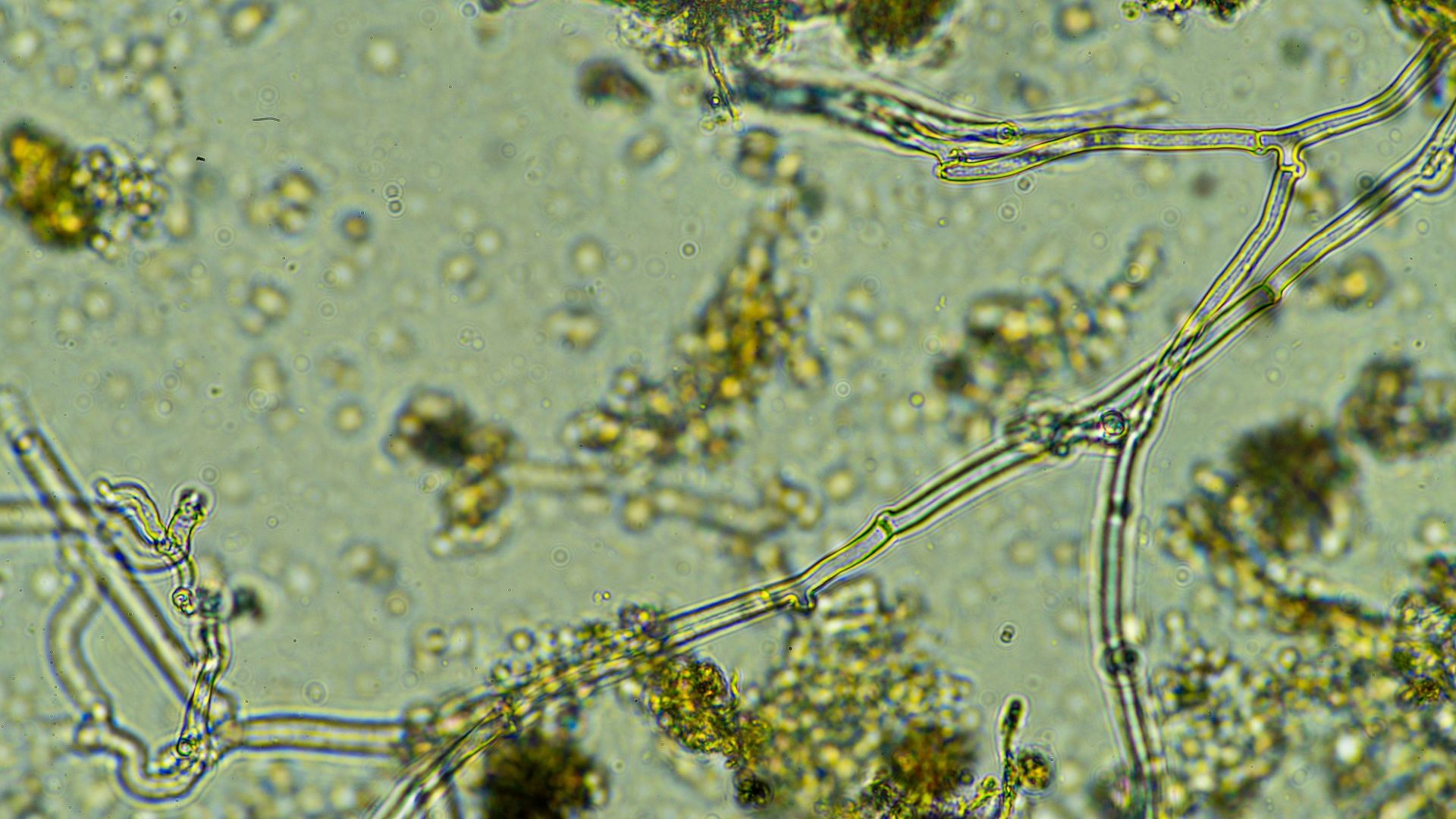
Synthetic vs Organic Fertilizers for Cannabis
Share

In gardening, a key consideration for every green-thumb enthusiast is providing the best nourishment to their beloved plants. The debate between synthetic fertilizers and organic alternatives intrigues gardeners worldwide. As a knowledgeable organic gardener, I aim to shed light on the differences between these two approaches, exploring how plants naturally acquire nutrients, the effects of synthetic nutrients on soil life, and when synthetic fertilizers may have a place in gardening.
The Natural Dance of Nutrient Uptake
In the great tapestry of nature, plants have evolved to extract the necessary nutrients from the soil through various processes with the surrounding ecosystem. Plants absorb minerals and organic matter from the earth with the assistance of beneficial microorganisms. This symbiotic relationship supports a thriving soil life, ensuring the availability and balance of essential nutrients for plant growth.
In the microscopic realm of the soil food web, microorganisms play a vital role in unlocking the essential elements within rocks and minerals. Through the remarkable power of their enzymes and acids, these microscopic organisms contribute to the breakdown and release of essential nutrients for plant uptake.
As microorganisms such as bacteria and fungi colonize the soil, they secrete a diverse array of enzymes and organic acids. These enzymes act as molecular keys, unlocking the tightly bound nutrients present in rocks and minerals. By breaking down complex organic matter and mineral compounds, these enzymes liberate elements like nitrogen, phosphorus, potassium, and others, making them accessible to plant roots.

The acids produced by microorganisms further aid in the weathering and dissolution of minerals, facilitating the release of micronutrients into the soil solution. The complex relationships within the soil food web transform inert rocks into the life-giving nourishment that fuels the growth and vibrancy of our plants.
Symbiotic Relationships: Mycorrhizal Associations
Certain microorganisms forge unique symbiotic relationships with plants, forming intricate alliances known as mutualistic mycorrhizal associations. One such group is mycorrhizal fungi, which establish a fascinating give-and-take arrangement with plant roots. These fungi extend their delicate hyphae into the soil, exploring far and wide for nutrients. In return, they receive a steady supply of carbon-rich root exudates from the plant.
This exchange of chemical signals benefits both parties involved. The mycorrhizal fungi enhance the plant's nutrient uptake capacity, especially for phosphorus and other minerals that are often limited in availability. The plants, in turn, receive improved nutrient absorption and a network of fungal hyphae that extends their reach beyond the immediate root zone. This collaboration between microorganisms and plants reveals the intricate web of interdependence that sustains life beneath our feet.

This exchange of chemical signals benefits both parties involved. The mycorrhizal fungi enhance the plant's nutrient uptake capacity, especially for phosphorus and other minerals that are often limited in availability. The plants, in turn, receive improved nutrient absorption and a network of fungal hyphae that extends their reach beyond the immediate root zone. This collaboration between microorganisms and plants reveals the intricate web of interdependence that sustains life beneath our feet.
We can mimic nature by feeding our soil with organic fertilisers that will be broken down by various microbes and exchanged with plants.
Organic Fertilizers: Nurturing Our Plants With Sustainable Solutions
Organic fertilizers encompass a diverse range of materials and products that nourish plants while promoting soil health. From dry amendments, compost, and specially developed products, there are a variety of ways to feed your soil with sustainable nutrients.
One commonly used form of organic fertilizer is dry amendments, which include materials such as bone meal, blood meal, fish meal, and rock phosphate. These amendments slowly release nutrients into the soil as they break down, providing a steady and balanced supply of essential elements. Dry amendments are often applied before planting or worked into the soil during cultivation, ensuring a gradual release of nutrients that supports plant growth throughout the growing season.
Compost, a hallmark of organic gardening, is another invaluable organic fertilizer. Compost is created through the decomposition of organic matter, such as kitchen scraps, yard waste, and animal manure. Rich in nutrients and beneficial microorganisms, compost enhances soil structure, improves moisture retention, and supplies a spectrum of essential nutrients to plants. It also contributes to the development of a robust soil food web, fostering a diverse community of microorganisms that facilitate nutrient cycling and promote overall soil health.
Nutrient teas, derived from organic materials like compost or specific plant ingredients, are gaining popularity among organic gardeners. These teas are created through a process of steeping or fermenting organic matter in water, allowing the nutrients and beneficial microorganisms to extract into the liquid. Nutrient teas can be applied to plants as a foliar spray or soil drench, providing an immediate boost of nutrients while also introducing beneficial microorganisms to the growing environment.

Organic fertilizers and amendments that have been developed specifically to work with the soil food web are gaining recognition for their ability to enhance plant nutrition and soil health. These products are designed to stimulate and support the diverse community of microorganisms in the soil, thereby optimizing nutrient availability and nutrient cycling. By harnessing the power of beneficial microorganisms, these organic fertilizers and amendments promote a thriving soil ecosystem, leading to improved plant vigor, disease resistance, and nutrient uptake.
While organic fertilizers offer numerous benefits, they also come with some limitations. The nutrient content of organic fertilizers can vary, making it important to understand the specific nutritional needs of plants and to apply the appropriate amount. Organic fertilizers generally release nutrients more slowly than synthetic fertilizers, requiring careful timing and planning to meet plant requirements throughout the growing season. Additionally, organic fertilizers may be bulkier and less concentrated than synthetic alternatives, necessitating larger quantities for application. However, the long-term benefits of organic fertilizers in terms of soil health, sustainability, and environmental impact make them a preferred choice for many gardeners committed to working in harmony with nature.
Synthetic Nutrients: The Man-Made Alternative
On the other hand, synthetic fertilisers represent a human attempt to mimic nature's nutrient cycle. These fertilisers are created by synthesising essential minerals and compounds, typically derived from non-renewable sources such as petroleum or mining operations. Although synthetic nutrients can provide immediate boosts to plant growth, they lack the intricate complexity and balance of naturally occurring organic matter found in nature.
The advent of synthetic fertilisers marked a significant milestone in the history of agriculture. In the early 20th century, scientists began unravelling the secrets of plant nutrition and developing methods to synthesise nutrients artificially.

It was during World War I when the destructive potential of nitrogen-based compounds was harnessed in the form of chemical warfare. Nitrogen-based chemicals, such as ammonium nitrate, were used to develop deadly explosives that reshaped the battlefield. However, the transformative power of these compounds was noticed by scientists and innovators of the time.
In the aftermath of the war, efforts were made to repurpose the knowledge gained from chemical warfare into peaceful applications, namely, in agriculture. The Haber-Bosch process, developed by Fritz Haber and Carl Bosch, revolutionised the production of synthetic nitrogen fertilisers. By using high-pressure conditions and catalysts, they found a way to convert atmospheric nitrogen into ammonia, a key ingredient in nitrogen-based fertilisers.

This breakthrough allowed for the mass production of synthetic fertilisers, providing a readily available source of nitrogen that could boost crop yields and support the growing demand for food. While the history of synthetic fertilisers is intertwined with the dark spectre of chemical warfare, it also highlights the ingenuity of scientists who redirected these technologies to address the global challenge of feeding a rapidly expanding population.
The Impact On Soil Life And The Environment
One of the most critical differences between synthetic fertilisers and organics is their impact on soil life. When synthetic nutrients are applied, they can disrupt the delicate ecosystem of microorganisms, fungi, and beneficial insects in healthy soil. These organisms are crucial in nutrient cycling, maintenance of soil structure, and disease suppression. Over-reliance on synthetic fertilisers can lead to a decline in soil fertility, reduced water-holding capacity, and increased vulnerability to pests and diseases.
The use of synthetic fertilisers, including specific chelating agents, can have detrimental effects on the environment. Chelating agents, such as synthetic EDTA (ethylenediaminetetraacetic acid), can persist in the soil and potentially harm beneficial microorganisms. This disruption in the microbial community can lead to a decline in soil fertility and biodiversity loss.
Another significant environmental concern associated with synthetic fertilisers is the issue of eutrophication. When synthetic fertilisers are over-applied or not adequately managed, excess nutrients, particularly nitrogen and phosphorus, can leach into groundwater or be carried away by runoff into nearby water bodies.
This nutrient runoff can cause eutrophication, a process where excessive nutrients stimulate the rapid growth of algae and aquatic plants. The excessive growth of these organisms depletes oxygen levels in the water, leading to the death of other marine species and disrupting the overall balance of the ecosystem. Additionally, the decomposition of the excessive plant growth consumes oxygen, creating "dead zones" where aquatic life cannot survive.
The improper application of synthetic fertilisers, such as spreading them before heavy rainfall or on sloping terrain, increases the likelihood of runoff and nutrient loss. This runoff contributes to eutrophication and has implications for water quality, as synthetic fertilisers may contain other additives and impurities that can contaminate water sources.
It is crucial to employ responsible and reasonable practices when using synthetic fertilisers to minimise their potential environmental impacts. Implementing proper application techniques, considering soil testing for nutrient requirements, and utilising organic and sustainable alternatives can help mitigate the negative consequences associated with the use of synthetic fertilisers.
The Importance Of Soil Life
Soil life is the unsung hero of a thriving garden. It serves as a natural ally, improving soil structure, enhancing nutrient availability, and fostering the resilience of plants. By nourishing the soil life using organic matter, compost, and other natural amendments, gardeners can create an environment that supports long-term sustainability, biodiversity, and plant health.

When soil becomes depleted of life, it undergoes a worrisome transformation that disrupts its natural balance and fertility. Soil life encompasses many organisms, including bacteria, fungi, protozoa, nematodes, earthworms, and more. These organisms perform critical functions in the soil ecosystem, such as decomposing organic matter, cycling nutrients, improving soil structure, and suppressing pests and diseases.
The absence of beneficial microorganisms and predatory organisms allows harmful pathogens and pests to proliferate unchecked, compromising plant health. The depletion of soil life creates a vicious cycle of declining fertility, reduced resilience, and decreased productivity, highlighting the importance of preserving and nurturing the life within our soils.
For cannabis specifically, terpenes, which are aromatic compounds found in plants, contribute to our medicinal plants' flavours, scents, and therapeutic properties. Soil life influences the production and diversity of terpenes, and their decline can result in diminished aroma, taste, and medicinal potency. Preserving and nurturing soil life is crucial for sustaining the nutritional and medicinal value of the plants we rely on for our well-being.
When Synthetic Nutrients May Be Appropriate
While organic gardening is often seen as the gold standard, there are situations where synthetic nutrients might find a place in a gardener's toolkit. In certain instances, when rapid and specific nutrient corrections are required or when dealing with certain soil deficiencies, synthetic fertilisers can offer a quick fix. However, their use should always accompany a long-term plan to restore and maintain soil health through organic practices.
Conclusion
As passionate gardeners, our aim should be to mimic nature's wisdom rather than challenge it. While synthetic fertilisers may offer short-term benefits, they often come at the cost of long-term soil health and ecological balance. By adopting organic practices that nourish soil life and embrace the richness of nature's cycles, we can create thriving gardens that yield bountiful harvests and contribute to preserving our precious environment. Remember that our gardens are not just patches of green; they are sanctuaries where we can connect with the wonders of the natural world.

